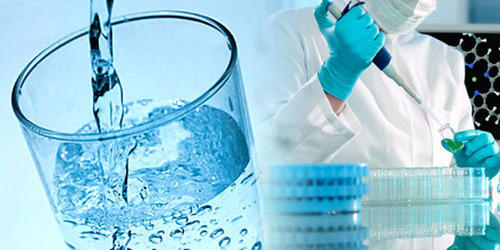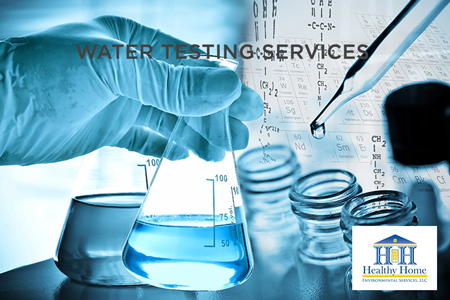Locate Trusted Water Testing Services Near Me for Clean Consuming Alcohol Water
Discover What Is Included in Water Checking and Just How It Makes Certain Safe Alcohol Consumption Water
Comprehending the details of water testing is critical in making certain the quality and safety of our drinking water. With a careful examination of physical, chemical, and microbiological aspects, water testing determines prospective impurities that can position health risks. From the presence of heavy metals to unsafe microbes, each examination component plays a vital function in preserving the integrity of our water system. Advanced strategies like chromatography and spectrometry boost the precision of these analyses. Yet, how do these processes convert right into the regulative frameworks that guarantee safety and security in our day-to-day usage?
Key Elements of Water Screening
Water screening is a crucial procedure that entails several key elements to make sure the security and high quality of alcohol consumption water. In addition, making certain the pH balance of water is vital, as it impacts the water's corrosiveness and the effectiveness of disinfection processes.
Another significant component involves microbiological analysis, where water samples are checked out for the existence of microorganisms such as germs, viruses, and protozoa. If taken in, this evaluation is essential to identify biological risks that can pose wellness risks. Additionally, chemical evaluations are performed to find organic and not natural compounds, such as hefty metals, nitrates, and chemicals, that could be present in the water system.

Identifying Hazardous Impurities
Finding unsafe pollutants in drinking water is a fundamental aspect of safeguarding public health and wellness. This procedure involves recognizing prospective risks that can compromise the top quality and safety of water supplies. Pollutants can range from bacteria such as microorganisms, infections, and protozoa, to inorganic compounds like lead, arsenic, and nitrates, in addition to organic contaminants including chemicals and industrial chemicals. Each type of pollutant presents distinctive health risks, making their detection important to make certain the water taken in by the public is safe.
Water testing for contaminants is normally conducted by regulatory firms and water utilities, employing a mix of field sampling and research laboratory evaluation. These evaluations are designed to discover both normally occurring substances and anthropogenic contaminants that may have entered the water system through farming runoff, industrial discharge, or maturing facilities. Routine tracking is crucial, as contamination degrees can change because of environmental changes, seasonal variants, or human tasks.
The identification of damaging pollutants informs necessary activities, such as water therapy interventions or public advisories, to reduce risks. Early discovery is crucial to avoid negative health effects, varying from stomach health problems to long-lasting problems like cancer, thus making sure the proceeded security of alcohol consumption water.

Chemical Analysis Strategies
In the realm of making certain risk-free drinking water, chemical evaluation techniques play an essential function in identifying and evaluating contaminants. These approaches are important for spotting a large array of chemical materials, including heavy steels, pesticides, and commercial toxins, which can position substantial health and wellness risks. Methods such as atomic absorption spectroscopy (AAS) and inductively coupled plasma mass spectrometry (ICP-MS) are generally employed to gauge trace degrees of metals like mercury, lead, and arsenic. These instruments give accurate quantification, facilitating conformity with regulatory criteria.
Gas chromatography-mass spectrometry (GC-MS) is one more critical method, specifically for organic substances. It separates complicated blends and recognizes volatile and semi-volatile natural compounds, making certain that pollutants like benzene and toluene are within secure limits. High-performance fluid chromatography (HPLC) is similarly utilized for non-volatile materials, including specific chemicals and pharmaceuticals.
Ion chromatography is used to identify concentrations of anions and cations, such as nitrates and sulfates, which are crucial in examining water top quality. These chemical evaluation methods jointly make sure that drinking water remains secure by spotting deviations from developed pureness norms, thereby guarding public wellness. Ensuring accuracy and accuracy in these examinations is extremely important to keeping the stability of water safety analyses.
Microbiological Checking Methods
Exact microbiological testing is essential for safeguarding public health and wellness by guaranteeing that alcohol consumption water is cost-free from dangerous pathogens. This procedure includes detecting and identifying bacteria such as bacteria, infections, and protozoa that may contaminate water products. Common microorganisms consist of Escherichia coli, Giardia, and Cryptosporidium, each positioning substantial health and wellness threats.
Several approaches are employed in microbiological screening to identify these dangers. The membrane filtering technique is often used, entailing water going through a filter that captures bacteria, which are then cultured to identify their presence and concentration. The multiple-tube fermentation method allows the quantification of coliform germs making use of a series of dilution and incubation actions.
Improvements in modern technology have presented molecular techniques such as polymerase domino effect (PCR), which enables the very specific and fast detection of virus by enhancing their genetic product. Enzyme-linked immunosorbent assays (ELISA) additionally supply an approach to spot microorganisms by determining Water Testing Service certain healthy proteins or antigens.
These varied methods are vital for thorough water top quality analysis, guaranteeing that water treatment processes are effective and that distribution systems keep safety. By utilizing these microbiological screening approaches, possible carcinogen can be identified and mitigated quickly.

Value for Public Health And Wellness
Making sure the microbiological security of drinking water straight influences public health and wellness by stopping the spread of waterborne conditions. Virus such as microorganisms, infections, and protozoa can lead to illnesses like cholera, dysentery, and intestinal infections (Well water testing services). The application of thorough water testing procedures is vital in identifying and alleviating these threats, thus securing areas from potential episodes
Regular water screening not just identifies microbial contaminants but likewise analyzes chemical and physical criteria that can impact health. Extreme levels of nitrates or heavy steels such as lead can position serious wellness risks, especially to vulnerable populations like babies and pregnant females. By identifying these dangers early, water testing allows timely treatments, guaranteeing the water supply continues to be within risk-free intake requirements.
Moreover, water screening plays a vital role in keeping public confidence in municipal water supply. It offers transparency and responsibility, assuring the general public that their wellness is a concern. For policy manufacturers and health and wellness officials, the data stemmed from water testing informs choices on infrastructure financial investments and public wellness techniques, making sure resources are routed where they are most needed. In this means, water testing is crucial in promoting a much healthier, much safer culture.
Verdict
Water testing acts as a vital mechanism for making sure the safety and security and top quality of drinking water via extensive evaluation of its physical, chemical, and microbiological residential or commercial properties. By finding hazardous pollutants, such as heavy metals and pesticides, and making use of advanced methods like chromatography and spectrometry, water testing assists in the recognition of possible wellness risks. The implementation of extensive testing procedures is crucial for preserving conformity with safety requirements, eventually securing public health and wellness and enhancing self-confidence in municipal water supply.

By recognizing these dangers early, water screening allows prompt interventions, guaranteeing the water supply remains within secure usage requirements.
Water testing serves as an essential system for guaranteeing the security and high quality of alcohol consumption water with detailed analysis of its physical, chemical, and microbiological homes.